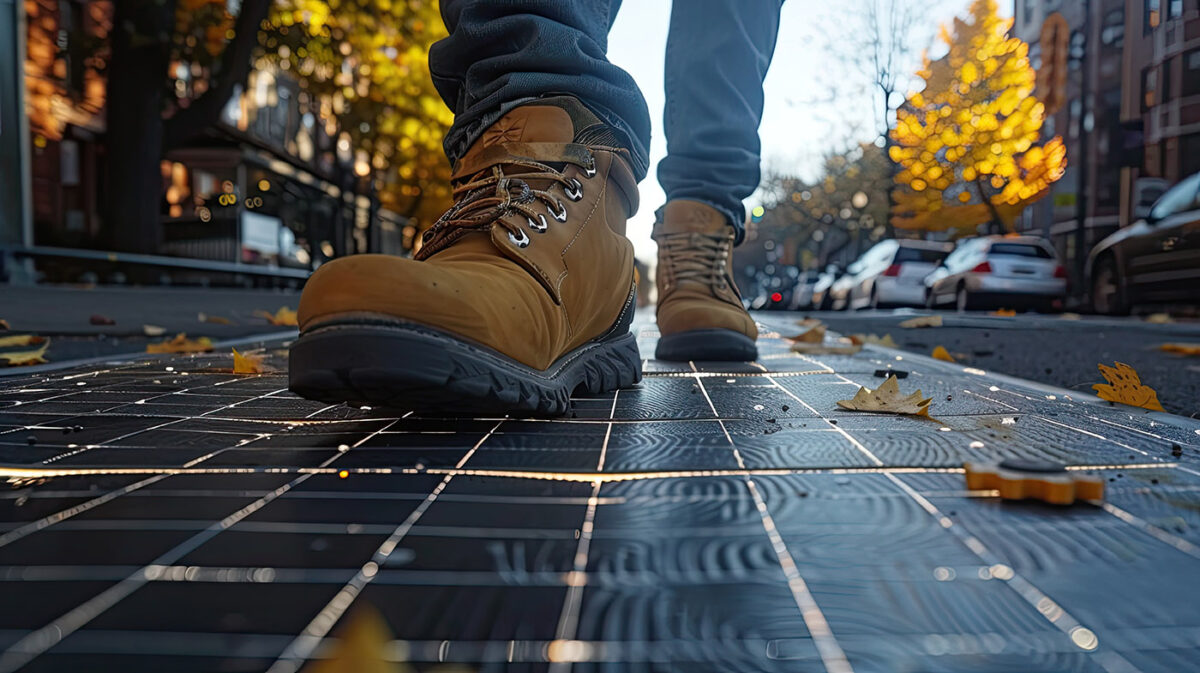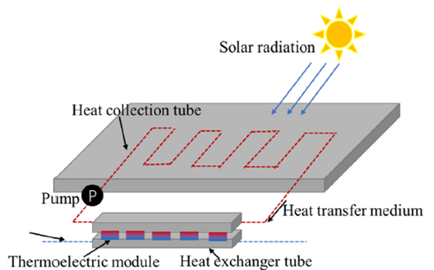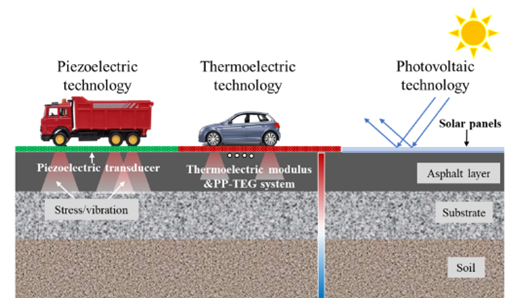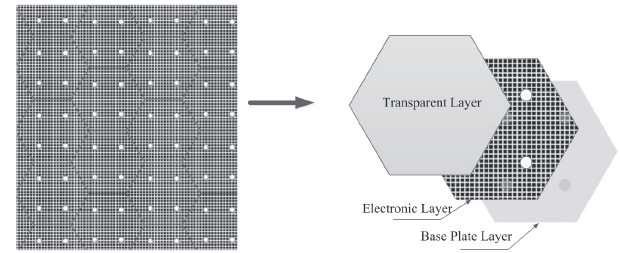Roadway Pavements as Energy Sources

Innovative Roadway Pavements can fulfill multiple functions, including pavement condition monitoring, snow-melting, urban heat island effect (UHI) reduction, and self-healing.
Roads and highways are vital for moving goods and people, driving economic growth and consuming substantial energy. The global transport sector, which accounts for 28% of total final energy use, predominantly directs this energy to road transport at various scales. In response to energy consumption and generation challenges, intelligent pavements have been developed to directly harness energy from roadways.
You can also read: Exploring the Dynamics of Self-Regulating Heating Cables
Technologies such as thermoelectric generators (TEGs), piezoelectric transducers, and solar panels, previously utilized in vehicle engineering, sensor technology, and aerospace, capture energy from a variety of sources including solar, mechanical, and geothermal forces, as well as vibrations, rainwater, and wind. However, their integration into pavement engineering necessitates a detailed evaluation of their mechanisms and feasibility. Power density analysis is crucial in determining the most suitable energy source for specific applications. Ongoing research and development are focused on refining these technologies to enhance their effectiveness in energy harvesting from pavements and roadways, exploring their fundamental principles, techniques, and advancements.
Thermoelectric Technologies
Thermoelectric technologies capitalize on temperature gradients between different layers of pavement structures. They leverage the Seebeck effect to convert temperature differences into electrical energy, providing power for low-power electronic devices, such as sensors and remote transmitters.
Thermoelectric Generators (TEGs)

Diagram of Pipe Pavement-Thermoelectric Generator system. Courtesy of Renewable and Sustainable Energy Reviews.
TEGs convert solar and geothermal energy into usable electricity. The Pipe-Pavement (PP-TEG) system exemplifies this design, using embedded pipes filled with water heated by solar radiation. This system generates enough power to run a pump, ensuring continuous circulation of the liquid and providing additional energy for other equipment.
Piezoelectric Technologies
Piezoelectric transducers harvest mechanical energy generated from vehicle-pavement interactions by converting mechanical stress into electrical energy. Made from materials like polyvinylidene fluoride (PVDF) and lead zirconate titanate (PZT), these transducers integrate seamlessly into pavements, capturing energy from daily vehicular movement.
Transducer Configurations
Various configurations, including Cymbal, Bridge, and Cantilever transducers, were evaluated in both laboratory and field settings. These designs prove significant potential for generating electricity from piezoelectric effects, particularly when installed on pavements.

Diagram of electric energy harvesting technologies in asphalt pavement. Courtesy of Renewable and Sustainable Energy Reviews
Mechanical Energy Harvesting Research
Recent research has explored ways to optimize the energy-harvesting potential of pavements from mechanical energy sources. One study found that piezoelectric transducers can convert vehicle-induced vibration into electrical energy with efficiencies sufficient to power low-power electronic devices. Further developments in this area focus on enhancing transducer configurations and integrating them more seamlessly into pavement structures.
Photovoltaic Technologies for Pavements

Solar roadway panel and its layers Courtesy of International Journal of Energy Research
Another crucial resource for energy harvesting is solar energy. Pavements can integrate photovoltaic cells directly, allowing them to harness sunlight throughout the day. In the Netherlands, an Integrated PV bike path design exemplifies this approach, incorporating photovoltaic cells protected by glass layers.
Cost-Effectiveness
The Levelized Cost of Energy (LCOE) metric provides a useful measure for evaluating the economic feasibility of these technologies. Piezoelectric transducers, for example, can achieve LCOEs ranging from $0.04 to $2.19 per kWh, highlighting their competitive edge.
Prospects
Pavement energy harvesting offers promising opportunities but faces significant challenges. One key prospect is the development of technologies that use various energy sources, including solar radiation, mechanical loading and vibration, geothermal energy, rainwater, and wind. These technologies can help monitor pavement conditions, mitigate the urban heat island effect, and reduce greenhouse gas emissions by generating clean energy.
However, challenges persist. The integration of thermoelectric, piezoelectric, and photovoltaic technologies into pavement structures requires careful evaluation of their mechanisms, feasibility, and durability. Additionally, balancing cost-effectiveness, power density, and technological efficiency poses another hurdle. Research continues to address these issues, exploring hybrid systems and innovative designs that blend sustainability, functionality, and economic viability for a more sustainable future.
